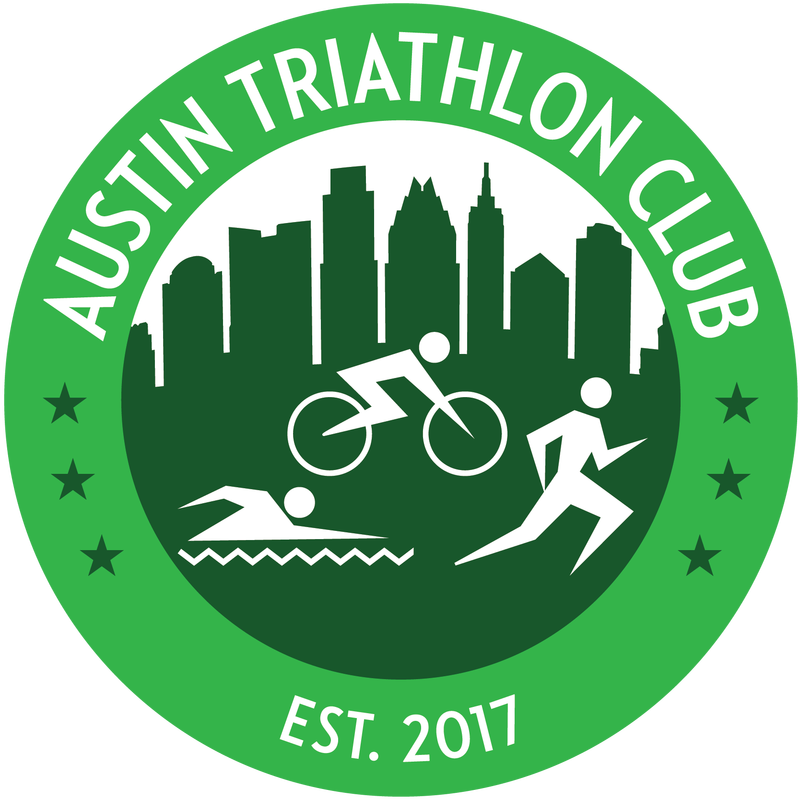 So you say you never want to ride in the rain. What happens if it rains on race day? What do you do if you’re out on a long ride and the weather forecast was all wrong and you get a surprise rain shower? Truth is you at some point in time, you will probably end up riding in the rain. And that’s not a bad thing. It’s good to know how your bike handles in the rain and to have confidence in it and your abilities. Here are a few tips for when you find yourself riding in the rain. 1. Back off If you are riding with other people, often their back tire will spray water and dirt behind them making making the situation even worse the people behind them. Give the people around you some room. Now is not the time to be drafting. 2. Give yourself plenty of stopping distance When they are wet, brakes don’t work as well. This is especially true of the normal rubber padded rim brakes most road bikes have. Through in a little oil from the road and I’ve had to actually look and see if my brakes where still there at all. So much like when you’re driving on the snow, apply brakes early to judge their stopping power and give yourself plenty of room to stop. Bikes with rotor brakes, like many mountain bikes and some of the newer road bikes, will be effected less by this and will be able to stop quicker, so even more reasons for the #1 tip. 3. Watch for slippery surfaces Be vigilant for upcoming surfaces that may alter your traction. Water on the road that has a rainbow look probably has oil in it. Lines painted on the road will become much more slippery. Metal surfaces like manhole covers and grates can be slick as ice so treat them as such. 4. Tires Many people will lower their tire pressure (5 to 10psi) to give them a bit more traction. Doing though will increase the chance of a pinch flat, so be a bit more careful when going over surfaces that have an edge like train tracks and bridge abutments. Speaking of flats, rain tends to wash things to the side of the road, where we often ride, and wet tires tend to pick up more junk. Be sure you have good tires and have a flat kit of course. Some tires may also be better at handling the rain than others so something to consider when shopping for that next set. 5. What to wear A waterproof outer shell is good, but I always tend to end rainy rides soaked no matter what I wear. So I tend to try and make sure I stay warm and safe. To make sure I stay warm, I usually dress as if it was a bit colder than it is to offset the cooling effect of the rain. Being able to see where you’re going is essential and I were clear eyewear treated with Rain-X to shield my eyes. You also want to be seen so wear bright colors. 6. Be visible Rain and fog lowers visibility for other riders and for the cars we often share the road with. Even during the day, it’s important to wear colors that stand out. And I can’t stress enough the importance of having working, charged, and water resistant lights both front (white) and back (red). Just as in a car, when it’s raining, you should have your lights on. 7. After the ride Give your bike some love after the ride. Wipe off the dirt and water and oil the chain and cables to keep rust away. ------------------------- About the Author - Larry is a long-time triathlete who has completed every distance of triathlon, including three Iron-distance triathlons. Larry recently qualified for the 2018 USAT Olympic-Distance Age Group National Championships in Ohio. Larry is currently serving as Austin Tri Club's Director of Training and Group Workouts. To read more about Larry and the rest of the Austin Tri Club board, check out our Club Leadership page. What activity can help you greatly improve your health, eliminate stress, boost confidence, and burn fat, without having to buy a single supplement or step foot into a gym? That's right - running.
Running is perhaps one of the most approachable workouts for people looking to stay in shape, without having to learn a sport or new dance move - but that's just the tip of the iceberg. There are tons of reasons to start running.
But as with any activity or workout, there are certain safety measures that should be put into place to prevent injury down the road. The following safety tips should give you what you need to begin training (safely) for the running portion of a triathlon. Maintain Your Strength The best way to prevent injury is keeping up your strength. If you are just starting out, don’t push yourself too far or you might risk an injury. Start small, build your way up, and keep your muscles active and strong. Some exercises suggested by RunnersWorld.com are:
Working out your whole body to prepare for your runs is one of the best steps towards preventing unforeseen injuries. By following the suggested workouts, you're a lot less likely to encounter any permanent damage. If you're running for distance or speed, it might be a good idea to strengthen and improve the muscles in your legs.
Remember to Stretch One of the first things athletes, coaches and athletic professionals will tell you: "Stretch!" Always remembering to stretch in addition to strength training can help you maintain the flexibility needed to be an excellent triathlon runner. You should stretch for about ten minutes before each run, making sure not to rush yourself. For the most effective stretches, be sure to hold each of them for at least thirty seconds. The best way to incorporate this into your daily run is to permanently make it part of your routine. Make it a point to stretch before you even step foot out your front door.
Stay Hydrated Running or training for triathlons will have your body using much more water than you may be used to. For this reason, it’s especially important to not only replace the water you lose while running but the electrolytes, too. When we sweat, we're not just losing water - we're losing electrolytes, like chloride, sodium, magnesium, and potassium. Your body uses these electrolytes to regulate vital processes - like heart and brain function. While many sports drinks may contain electrolytes, be sure to watch out for the sugar content - it could be extremely high. Some other ways to infuse electrolytes and important minerals into your workout include: Making a Homemade, Sugarless Sports Drink
Eating Almonds Almonds are a great source of magnesium. In fact, just a single ounce of almonds has 78 milligrams of magnesium. Other great sources of this mineral are:
Keep Tomato Juice Handy Drinking tomato juice is a great way to get some potassium into your body - especially on-the-go. If you prefer the taste of orange juice, you can enjoy that instead. One glass of OJ provides 500mg of potassium. Here are some great hydration resources for runners:
Always Keep Personal Safety First There are a handful of important personal safety tips to keep in mind before you head out for your run. Brushing aside health and fitness, the main goal here is to stay safe. Plan Your Route When you go out for a run, make sure to plan ahead to avoid busy roads or dangerous areas, but don't think that an underpopulated road or neighborhood will be safer - in fact, it could be the opposite. Many runners love the beautiful scenery and peaceful locations, but safety experts say that in these areas you have less access to help - should you need it. Before you head out, also ensure that you tell someone your route so they can check in on you, if need be. It's also important to update them if you plan on changing it, so you have at least one person who will know where you are at all times. Bring Along Some Friends When running, there is always strength in numbers. Bringing more people offers greater visibility and helps ensure that someone is always alert. If you’re not sure who to ask to come along, consider:
Other resources include: Always Stay Alert While running itself can be safe if you take care of your body, there are outside factors which could blindside you, if you're not careful. Some of the most important clues to incoming safety risks can be found in your surroundings. Try to run during the day so you will be more visible to drivers on the road and so you can see incoming dangers well in advance, too. If you aren’t completely sure if something could be a danger to you, such as a suspicious car or person, trust your instincts and head back or contact someone immediately. Bringing something that can make noise to alert others to your situation, like a whistle, for example, can save your life. Leave Your Headphones at Home Some of the most crucial hints of impending danger are sounds. Always listen for approaching cars, animals and people. To make sure that you are the most in-tune with your surroundings, leave your headphones behind and make sure you pay full attention to what’s going on around you. Sure, listening to your favorite jams while going for a run may be a nice way to enjoy yourself, but headphones can also give a signal to dangerous individuals that you can't hear them - making you a potentially easy target. Make Sure You Have the Right Footwear Since your feet are one of the most important tools you will use while running, it's important to take good care of them. Just like you would never set off for the biking portion of a triathlon with a flat tire, you should never begin running if your footwear isn't up to the task. Shoes for triathlon running should fit snugly around your foot, but should not be tight enough to cause blisters. There should be a little room in front of your toes as well. An employee at a store that specializes in shoes for triathlon running or a podiatrist or orthopedist can help make sure your shoes are fitted well enough not to cause injuries.
Bring Identification Whether you think so or not, one of the most important components of running safety is your identification. When you set off running, always make sure you have a form of identification, like a driver’s license or state-issued ID. Additionally, it's always a good idea to have proof of your blood type, in case you need treatment at a hospital. Try to bring along an emergency contact list, if you can. Some phones have emergency contact features as well, which could make the job of a first responder a lot easier. Jen Port, Austin High School Jen wrote this blog post for Austin Triathlon Club as part of her health class project. SOURCE: Banks, Summer. Healthy and Safe Running: A Detailed Guide. Oct 25, 2017. https://www.dietspotlight.com/benefits-of-running/ |
Welcome to the Austin Triathlon Club blog! Through this blog, Austin Tri Club members can share their triathlon knowledge and experiences. If you are interested in blogging for Austin Tri Club, please contact us. Archives
September 2019
Categories
All
|

 RSS Feed
RSS Feed

